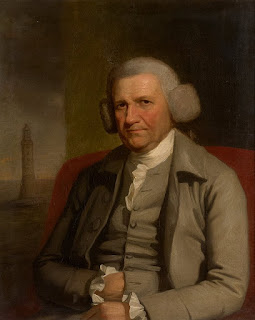Alexandre Gustave Eiffel: The Civil Engineer Of Eiffel Tower
Alexandre Gustave Eiffel is a name that is synonymous with one of the most iconic structures in the world - the Eiffel Tower. The tower is not only a symbol of Paris but also a testament to the ingenuity and creativity of Eiffel, who designed and oversaw the construction of the tower. In this blog, we'll take a closer look at Eiffel's life and the story of how the Eiffel Tower came to be.
Early Life and Career
Alexandre Gustave Eiffel was born on December 15, 1832, in Dijon, France. His father, a wealthy industrialist, encouraged Eiffel to pursue engineering. Eiffel studied at the École Centrale des Arts et Manufactures in Paris and graduated in 1855. He then worked as an engineer for several years before founding his own engineering firm in 1866.
Eiffel's firm was responsible for the construction of several notable structures, including the Garabit viaduct, which was the highest bridge in the world when it was completed in 1884. Eiffel was also involved in the construction of the Statue of Liberty in New York City, which was designed by his friend and collaborator, Frédéric Auguste Bartholdi.
The Eiffel Tower
In 1889, Paris was set to host the World's Fair, an event that would showcase the latest innovations and technology from around the world. The French government wanted to create a centerpiece for the fair that would be a symbol of modernity and progress. A competition was held to design a tower for the fair, and Eiffel's firm submitted a design that was ultimately chosen.
The Eiffel Tower was completed in just two years, from 1887 to 1889. It stands 324 meters tall and was the tallest structure in the world until the completion of the Chrysler Building in New York City in 1930. The tower is made of wrought iron and weighs over 10,000 tons.
The construction of the tower was not without controversy, as many people at the time felt that it was an eyesore and would ruin the skyline of Paris. There were also concerns about the safety of the tower, as it was much taller than any other structure in the city. However, Eiffel was confident in the design of the tower and took steps to address these concerns.
Legacy
Despite the initial controversy, the Eiffel Tower quickly became an iconic symbol of Paris and one of the most recognizable structures in the world. It has been featured in countless films, television shows, and photographs and has become a must-visit destination for tourists from around the world.
Eiffel continued to work on engineering projects until his death in 1923. He is remembered not only for the Eiffel Tower but also for his contributions to the field of engineering and for his innovative approach to design and construction.
Conclusion
Alexandre Gustave Eiffel was a visionary engineer who left a lasting mark on the world through his work on the Eiffel Tower and other notable structures. The tower, which was once controversial, is now a beloved landmark that is synonymous with Paris and with Eiffel's legacy. It is a testament to the power of innovation and creativity, and a reminder that sometimes the greatest achievements are born out of controversy and dissent.




Comments
Post a Comment